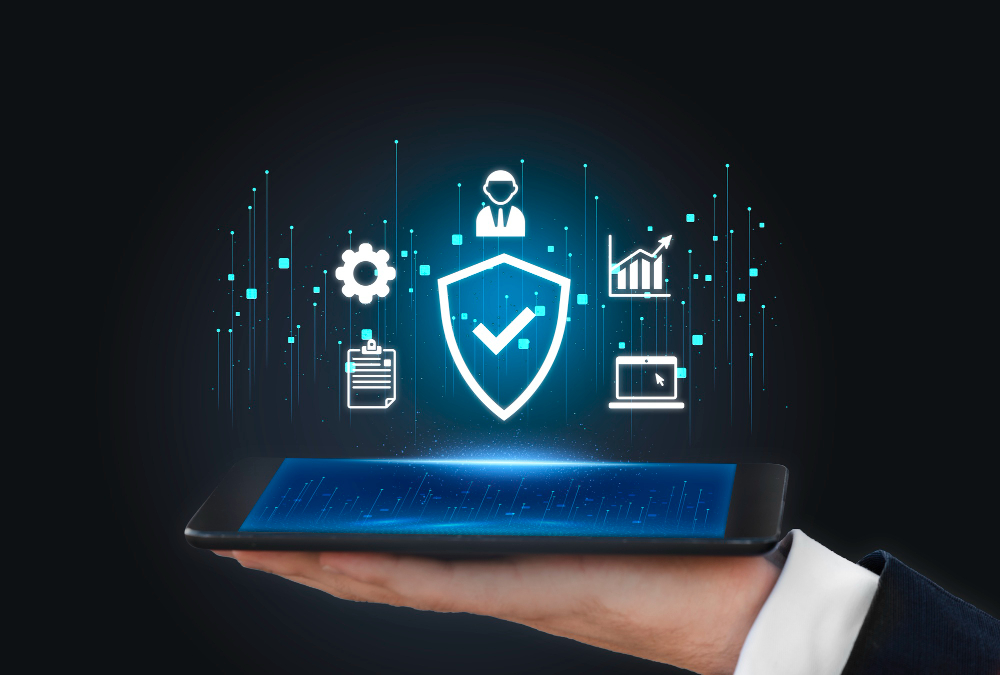RapidIdentity: Your Ultimate Guide to Secure Digital Access
In our increasingly digital world, managing who has access to what information is more critical than ever. Whether you’re a student trying to log into a school portal, an employee accessing company files, or an IT administrator managing thousands of users, the process needs to be both seamless and secure. This is where Identity and Access Management (IAM) systems come into play, and one name that frequently comes up in this space is rapididentity. This comprehensive solution helps organizations, especially in the education and business sectors, streamline and secure digital identities. But what exactly is rapididentity, and how does it work its magic?
This guide will walk you through everything you need to know about this powerful platform. We’ll explore its core features, understand its benefits, and see how it’s revolutionizing the way organizations handle digital access. From single sign-on to robust security protocols, we’ll cover all the bases to give you a clear picture of what makes rapididentity a go-to choice for modern identity management.
What is RapidIdentity?
At its core, rapididentity is an Identity and Access Management (IAM) platform designed to provide secure, efficient, and user-friendly access to digital resources. Think of it as a master key for all your digital doors. Instead of juggling dozens of different usernames and passwords for various applications, rapididentity allows users to access everything they need with a single, secure login.
This not only simplifies the user experience but also significantly boosts security. Developed by Identity Automation, the platform is particularly popular in the K-12 and higher education sectors, but its versatile features make it a strong contender for businesses of all sizes. It centralizes control over user identities, automates account lifecycle management, and ensures that only authorized individuals can access sensitive information. Essentially, rapididentity bridges the gap between user convenience and enterprise-grade security, creating a unified digital environment.
Key Takeaways
- Unified Access: rapididentity provides a single point of access to all applications and resources, simplifying the login process for users.
- Enhanced Security: It strengthens security through features like Multi-Factor Authentication (MFA) and granular access controls.
- Automation: The platform automates user lifecycle management, from onboarding new users to de-provisioning them when they leave.
- Sector Focus: While widely applicable, rapididentity has a strong foothold in the education sector, offering tailored solutions for K-12 schools and universities.
- Comprehensive IAM: It’s a full-suite IAM solution that covers everything from single sign-on (SSO) to identity governance.
Understanding the Core Components of RapidIdentity
To truly appreciate what rapididentity offers, it’s helpful to break it down into its main components. Each module is designed to address a specific aspect of identity management, and together they form a cohesive and powerful system. These components work in harmony to deliver a secure and streamlined experience for both end-users and administrators.
You can think of these as the building blocks that make up the entire rapididentity ecosystem. For administrators, this modular approach means they can implement the features they need most and scale the solution as their organization grows. For users, it means a consistent and intuitive experience across all their digital interactions. Let’s dive into some of the most critical components that make rapididentity a comprehensive solution.
Identity and Access Management (IAM)
This is the heart of the rapididentity platform. The IAM module serves as the central hub for managing all user identities within an organization. It automates the entire user lifecycle, from the moment a new student or employee is onboarded to the moment they depart. This process, often called “joiner-mover-leaver,” ensures that access rights are automatically granted, modified, or revoked based on the user’s role and status. For instance, when a new student enrolls, rapididentity can automatically create their accounts for the student information system, learning management system, and email. This automation not only saves countless hours for IT staff but also eliminates the risk of human error, ensuring that access permissions are always accurate and up-to-date.
Single Sign-On (SSO)
The Single Sign-On (SSO) feature is perhaps the most visible and appreciated component for end-users. With rapididentity SSO, users can log in once and gain access to all their approved applications without needing to re-enter their credentials. This eliminates password fatigue—the frustration and security risk that comes from managing multiple passwords. The platform supports thousands of applications through standard protocols like SAML and OAuth. This seamless access is provided through a personalized launchpad or portal where users can see all their applications in one place. For an organization, this means fewer password-related help desk tickets and a more productive workforce, as users can get to their tools faster.
Multi-Factor Authentication (MFA)
In an era of rampant cyber threats, a password alone is often not enough to protect sensitive data. The Multi-Factor Authentication (MFA) module in rapididentity adds a crucial layer of security by requiring users to provide two or more verification factors to gain access. This could be something they know (a password), something they have (a smartphone app or a security token), or something they are (a fingerprint or facial scan).
Rapididentity offers a wide range of authentication methods, including push notifications, one-time passcodes (OTPs), and biometric options. This makes it significantly more difficult for unauthorized users to compromise an account, even if they manage to steal a password. Implementing MFA is a best practice that leading publications like Forbes Planet often highlight as essential for modern cybersecurity.
The Role of RapidIdentity in Education
The education sector has unique challenges when it comes to identity management. With a transient user base of students and staff, a vast array of learning applications, and strict data privacy regulations, schools need a solution that is both flexible and secure. This is where rapididentity truly shines.
The platform was built with the needs of K-12 and higher education in mind, offering features that address the specific pain points of educational institutions. From simplifying classroom logins for young students to ensuring FERPA compliance, rapididentity provides a tailored experience that empowers educators and students while keeping the IT environment secure and manageable. Its ability to integrate with common education systems like student information systems (SIS) and learning management systems (LMS) makes it an invaluable tool for modern schools.
Streamlining Classroom Technology
In today’s classrooms, technology is everywhere. Students and teachers use dozens of digital tools for learning, from interactive whiteboards to online research databases. Managing logins for all these applications can be chaotic and time-consuming, eating into valuable instruction time. Rapididentity solves this problem by providing a simple, unified launchpad. Students, even the youngest learners, can access all their educational apps with a single click or even by scanning a QR code. This ease of access ensures that technology enhances learning rather than hindering it. By removing the friction of logging in, teachers can focus on teaching, and students can focus on learning, making the digital classroom a more efficient and engaging environment.
Automated Account Provisioning
Every new school year brings a flood of new students and staff, while others move on. Manually creating, updating, and deleting thousands of accounts is a monumental task for any IT department. Rapididentity automates this entire process. By connecting directly to the school’s Student Information System (SIS), the platform can automatically provision accounts and assign appropriate access rights as soon as a student is enrolled or a teacher is hired. When a student graduates or a staff member leaves, their access is just as easily de-provisioned, preventing security gaps from orphaned accounts. This “Zero-Day Start” capability ensures that everyone has the access they need on day one, and that access is promptly removed when it’s no longer required.
RapidIdentity for Business and Enterprise
While rapididentity has deep roots in education, its robust and scalable architecture makes it an excellent choice for businesses and large enterprises as well. The challenges of managing digital identities in the corporate world are just as complex, if not more so. Employees need access to a wide range of applications to do their jobs, from CRM systems and HR platforms to cloud services and proprietary software. A solution like rapididentity helps organizations enhance security, improve operational efficiency, and ensure compliance with industry regulations. By centralizing identity management, businesses can gain better visibility and control over who is accessing their systems, which is crucial for protecting corporate data and intellectual property.
Securing the Hybrid Workforce
The shift to remote and hybrid work models has expanded the security perimeter far beyond the traditional office walls. Employees are now accessing corporate resources from various locations and devices, creating new vulnerabilities. Rapididentity helps secure this distributed workforce by enforcing consistent security policies, regardless of where users are logging in from. Features like adaptive MFA can adjust authentication requirements based on risk factors like location, device, or time of day. This ensures that access remains secure without inconveniencing low-risk users. By providing a secure and seamless way to access work applications from anywhere, rapididentity supports the flexibility of modern work while maintaining a strong security posture.
Ensuring Regulatory Compliance
Many industries, such as healthcare and finance, are subject to strict regulatory requirements regarding data privacy and access control (e.g., HIPAA, GDPR, SOX). Failing to comply can result in hefty fines and reputational damage. Rapididentity helps organizations meet these compliance mandates by providing detailed auditing and reporting capabilities. The platform logs all access events, allowing administrators to track who accessed what, when, and from where. This audit trail is invaluable for demonstrating compliance during an audit. Furthermore, by automating access controls based on user roles, rapididentity ensures that the principle of least privilege is enforced, meaning users only have access to the information and systems they absolutely need to perform their jobs.
Implementation and Integration
Implementing a new IAM system can seem like a daunting task, but rapididentity is designed for a relatively straightforward deployment. The platform offers flexible deployment options, including on-premises, cloud, or a hybrid model, allowing organizations to choose the approach that best fits their infrastructure and security policies.
The integration capabilities are a key strength. Rapididentity comes with a vast library of pre-built connectors for thousands of popular cloud and on-premises applications, making the process of setting up Single Sign-On quick and easy. For custom or legacy applications, the platform provides tools and APIs to build custom integrations. This ensures that organizations can create a truly unified digital environment, bringing all of their applications under a single security and access umbrella.
|
Feature |
On-Premises Deployment |
Cloud Deployment |
|---|---|---|
|
Control |
Full control over hardware and infrastructure. |
Managed by the vendor, reducing internal IT overhead. |
|
Maintenance |
Requires internal IT staff for maintenance and updates. |
All maintenance and updates are handled by the vendor. |
|
Scalability |
Scaling may require purchasing and configuring new hardware. |
Easily scalable to accommodate growth. |
|
Cost |
Higher upfront capital expenditure for hardware and software. |
Subscription-based model with predictable operational costs. |
|
Accessibility |
Accessible within the corporate network, with VPN for remote access. |
Accessible from anywhere with an internet connection. |
Conclusion
In a world where digital identity is the new security perimeter, having a robust Identity and Access Management solution is no longer a luxury—it’s a necessity. Rapididentity stands out as a comprehensive, flexible, and user-friendly platform that addresses the complex challenges of modern identity management.
Whether for a school district aiming to simplify classroom technology or a large enterprise looking to secure its hybrid workforce, rapididentity provides the tools needed to enhance security, improve efficiency, and ensure compliance. By automating user lifecycle management, providing seamless Single Sign-On, and enforcing strong multi-factor authentication, it empowers organizations to take full control of their digital identities while providing a frictionless experience for users. As technology continues to evolve, solutions like rapididentity will be at the forefront, ensuring that access to our digital world is both simple and secure.
Frequently Asked Questions (FAQ)
What is the primary function of RapidIdentity?
The primary function of rapididentity is to provide secure and centralized Identity and Access Management (IAM). It simplifies user access to various applications through Single Sign-On (SSO) while enhancing security with features like Multi-Factor Authentication (MFA) and automated user account management.
Is RapidIdentity only for the education sector?
No, while rapididentity has a very strong presence in the K-12 and higher education markets with features tailored for schools, it is also a powerful and scalable solution for businesses and enterprises across various industries. Its core IAM functionalities are applicable to any organization looking to manage digital identities effectively.
How does RapidIdentity improve security?
Rapididentity improves security in several key ways. It reduces the risk of weak or stolen passwords by enabling Single Sign-On and enforcing Multi-Factor Authentication (MFA). It also automates the provisioning and de-provisioning of user accounts, which closes security gaps left by old or inactive accounts. Finally, its detailed logging and reporting help organizations monitor access and detect suspicious activity.
Can RapidIdentity integrate with our existing applications?
Yes, rapididentity is designed for extensive integration. It has a large library of pre-built connectors for thousands of common SaaS and on-premise applications. For any proprietary or legacy systems, it offers flexible integration options using standard protocols like SAML, OAuth, and SCIM, as well as APIs for custom development.













Post Comment